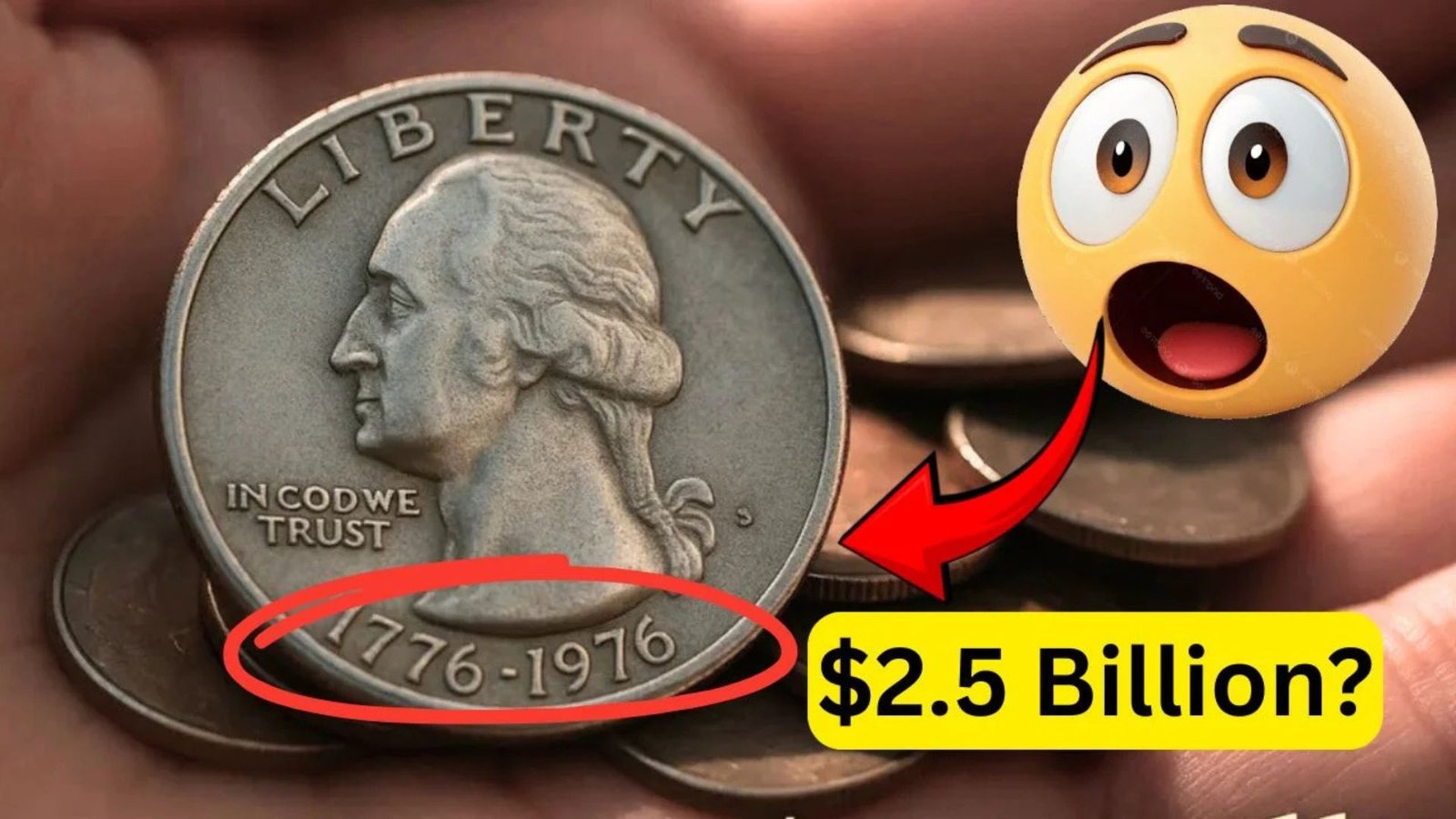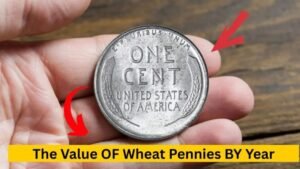Have you ever checked your spare change for a hidden gem? Among the coins jingling in your pocket, a rare Bicentennial Quarter could be worth a fortune—potentially up to $2.5 billion! Minted in 1976 to celebrate America’s 200th anniversary, these quarters are common, but a few rare versions stand out. This guide explains how to spot these valuable coins, why they’re so special, and how to cash in on your find. Let’s dive into the exciting world of coin collecting and uncover the secrets of the Bicentennial Quarter!
What Is the Bicentennial Quarter?
The Bicentennial Quarter is a special 25-cent coin released by the U.S. Mint in 1976 to mark 200 years of American independence. Unlike regular quarters, it has a unique design:
- Obverse (front): Features George Washington’s portrait, like standard quarters.
- Reverse (back): Shows a colonial drummer boy, the years “1776-1976,” and the motto “E Pluribus Unum.”
Most of these quarters are worth just 25 cents, but certain rare varieties can fetch millions due to minting errors or unique features. Let’s explore what makes some of these coins so valuable.
Why Are Some Bicentennial Quarters So Valuable?
Not all Bicentennial Quarters are worth a fortune, but specific factors make certain ones highly sought after by collectors. Here’s why:
1. Minting Errors
Mistakes during production can create rare coins. For example:
- Double Die Errors: The design appears doubled due to a misalignment in the minting process.
- Off-Center Strikes: The design is misaligned, with parts of the coin blank.
- Missing Mint Marks: Some coins lack the mint mark (a small letter indicating where they were made), increasing their rarity.
2. Silver Content
While most Bicentennial Quarters were made of copper-nickel, some were struck in 40% silver for collectors. These silver quarters, especially in pristine condition, are worth more than their face value.
3. Condition and Grading
Coins in excellent condition—known as “mint” or “uncirculated”—are more valuable. Professional grading services like PCGS or NGC assign grades (e.g., MS-65 or MS-70) based on a coin’s condition. Higher grades mean higher value.
4. Rarity of Specific Varieties
Certain quarters, like those with unique minting errors or from specific mints (e.g., San Francisco, marked with an “S”), are extremely rare. For instance, a 1976-S Silver Bicentennial Quarter in perfect condition reportedly sold for millions at auction.
How to Identify a Rare Bicentennial Quarter
Spotting a valuable Bicentennial Quarter requires a keen eye. Here’s a step-by-step guide to help you check your coins:
Step 1: Look for the Date
Check for the “1776-1976” date on the back. Only Bicentennial Quarters have this dual-date design.
Step 2: Check the Mint Mark
Look for a small letter on the front, near Washington’s neck:
- D: Denver Mint (common).
- P: Philadelphia Mint (no mint mark on some coins, which can be rare).
- S: San Francisco Mint (often silver, highly valuable).
Step 3: Inspect for Errors
Examine the coin for:
- Doubling: Look for blurry or doubled text, especially on “LIBERTY” or “1776-1976.”
- Off-Center Design: Check if the design is misaligned.
- Missing Elements: Ensure all design elements, like the drummer boy, are clear.
Step 4: Assess Condition
A shiny, uncirculated coin is more likely to be valuable. Avoid cleaning your coins, as this can lower their value.
Step 5: Use a Magnifying Glass
A magnifying glass or jeweler’s loupe can help you spot tiny errors or details that make a coin rare.
Key Features of a Valuable Bicentennial Quarter
| Feature | Description | Why It’s Valuable |
|---|---|---|
| Mint Mark | “S” (San Francisco) or no mint mark (Philadelphia) | Indicates silver content or rarity |
| Double Die Error | Blurry or doubled text/design | Rare minting mistake |
| Off-Center Strike | Misaligned design, leaving blank areas | Unique and collectible |
| Silver Content | 40% silver (mostly “S” mint coins) | Higher intrinsic value |
| Condition | Uncirculated or high-grade (e.g., MS-65 or higher) | Better condition increases market value |
Where to Find Bicentennial Quarters
You don’t need to dig through a pirate’s treasure chest to find these coins! Here are common places to look:
- Pocket Change: Check coins in your wallet or change jar.
- Coin Rolls: Buy rolls of quarters from banks and inspect them.
- Coin Shows or Shops: Visit local coin dealers or numismatic events.
- Online Marketplaces: Check eBay, Etsy, or auction sites, but beware of fakes.
- Inherited Collections: Old family coin collections might hold hidden treasures.
How to Sell a Rare Bicentennial Quarter
If you think you’ve found a valuable quarter, follow these steps to cash in:
- Get It Appraised: Take your coin to a professional coin dealer or grading service (e.g., PCGS or NGC) for an expert opinion.
- Avoid Cleaning: Cleaning can damage the coin and reduce its value.
- Research Market Value: Check recent auction prices for similar coins on sites like Heritage Auctions or eBay.
- Sell Through Reputable Channels:
- Auction Houses: For high-value coins, use established auctioneers like Heritage or Sotheby’s.
- Coin Dealers: Local or online dealers can offer fair prices.
- Online Platforms: List on eBay or specialized coin marketplaces, but ensure authenticity is clear.
- Store Safely: Keep your coin in a protective holder to maintain its condition until sold.
Tips to Avoid Scams
The coin market has its share of fakes and scams. Protect yourself with these tips:
- Buy from Reputable Sellers: Stick to well-known dealers or auction houses.
- Verify Authenticity: Get coins graded by PCGS or NGC before buying or selling.
- Beware of Overhyped Claims: If a deal seems too good to be true, it probably is.
- Research Prices: Compare prices on trusted platforms to avoid overpaying.
FAQ: Common Questions About Bicentennial Quarters
1. How much is a regular Bicentennial Quarter worth?
Most are worth 25 cents unless they have errors, silver content, or are in mint condition.
2. How can I tell if my quarter is silver?
Check for an “S” mint mark and a slightly different weight (about 5.67 grams for silver vs. 5.44 grams for copper-nickel). A coin dealer can confirm.
3. Where can I get my coin graded?
Contact professional grading services like PCGS (pcgs.com) or NGC (ngccoin.com).
4. Are all 1976 quarters valuable?
No, only those with rare errors, silver content, or high-grade conditions are worth significant money.
5. Can I clean my quarter to make it look better?
No, cleaning can damage the coin and lower its value. Leave it as is for appraisal.
6. What’s the rarest Bicentennial Quarter?
The 1976-S Silver Quarter in perfect condition (MS-70) or with major errors like a double die is among the rarest.
Conclusion
Your pocket change could be hiding a rare Bicentennial Quarter worth millions! By learning to spot unique features like minting errors, silver content, or high-grade conditions, you can turn a simple 25-cent coin into a life-changing discovery. Start checking your coins today, use a magnifying glass to inspect details, and consult a professional if you suspect you’ve found a gem. Whether you’re a seasoned collector or just curious, the hunt for a valuable Bicentennial Quarter is an exciting adventure. Happy hunting, and who knows—you might just find the next $2.5 billion coin!




